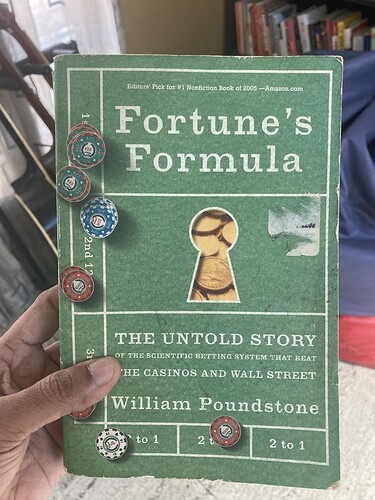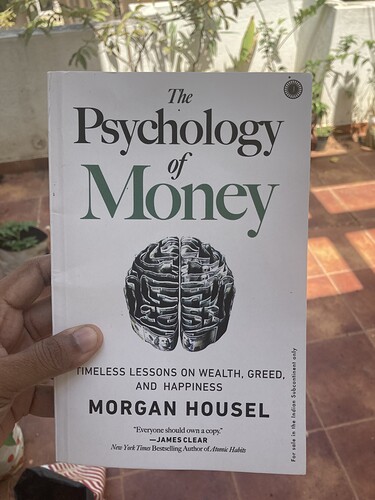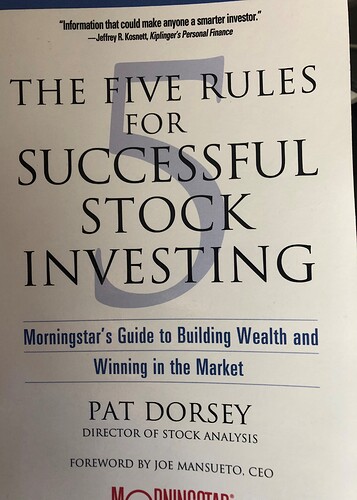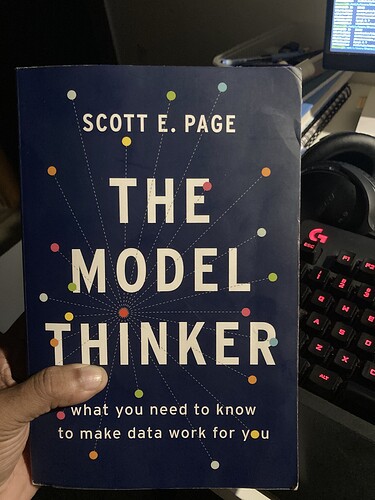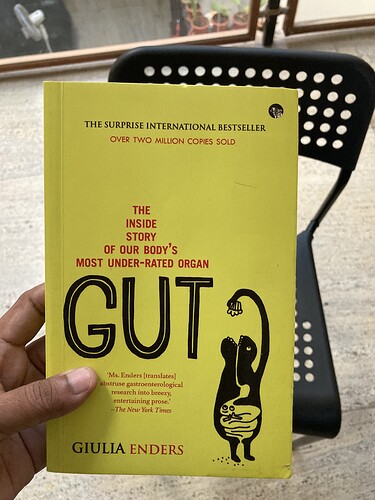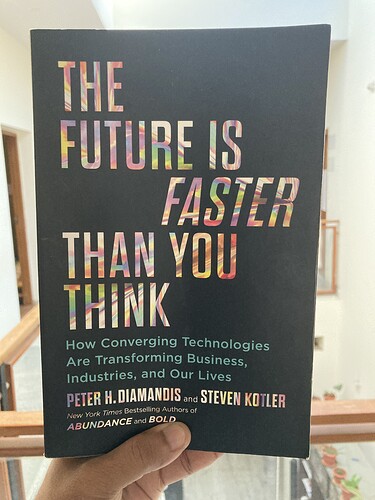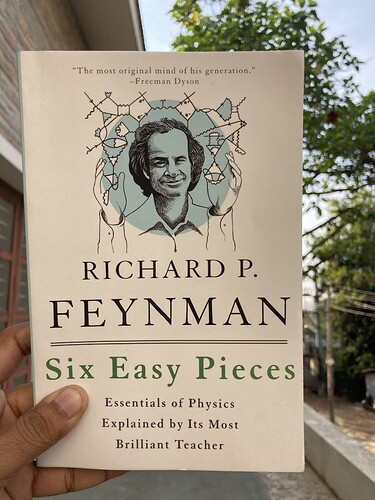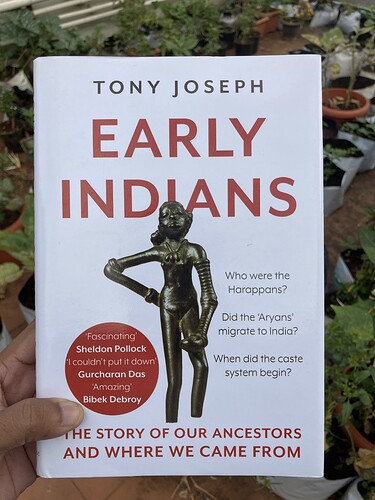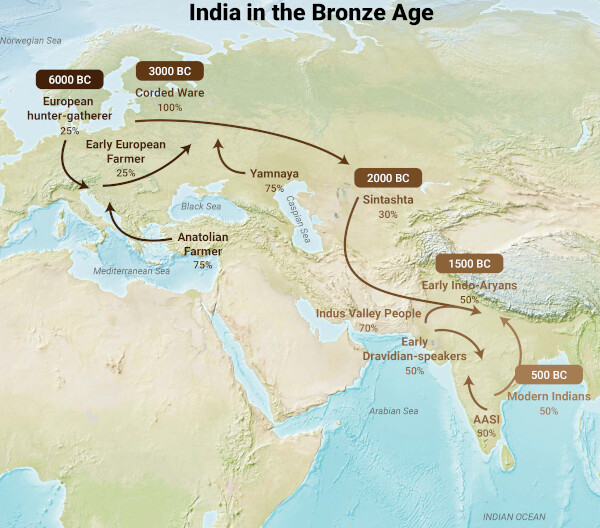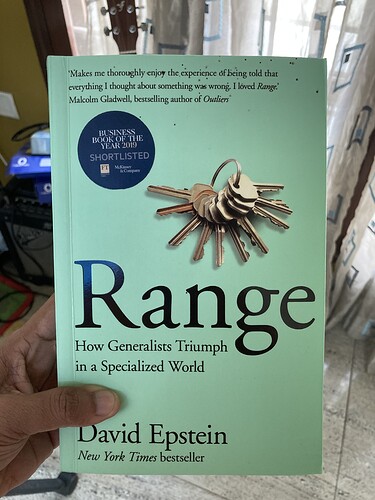Review of Pat Dorsey’s The Five Rules For Successful Stock Investing
Definitely one of the best beginner’s book, truly a DIY book.
Summarizing it below:
Chapter 1- The Five Rules for Successful Investing
-
Do Your Homework-Unless you know the business inside out, you shouldn’t buy the stock. Sit down and read annual reports, check out competition, go through past financial statements.
-
Find Economic Moats- It is used to describe a firm’s competitive advantage and allows companies to retain above-average levels of profitability for many years by fending off competitors. Question this exact thing to find the moat
-
Have a Margin of Safety- The difference between the market price and our estimate of value is Margin of Safety.
-The advantage of having a MoS is that if you overestimated the company’s prospects, you’ll have a cushion.
-MoS should be larger for shakier firms and can be less (maybe 20%) for big firms.
-If a company is trading at P/E of 30 and historically it has been trading between 15 and 33, you should be confident enough that the company’s outlook is better today than it was the past 10 years
-
Hold for the Long Haul- In trading frequently, both the taxes and brokerage costs really begin to add up
-
Know When to Sell- The key is to constantly monitor the companies you own instead of the stocks. When to sell:
a. Did you make a mistake?- If you bought the stock for a reason that’s no longer valid or your initial analysis was wrong, sell it
b. Have the fundamentals deteriorated?- After several years of success, maybe the fast-growing company has slowed down and cash is piling up, competition is eating away profits, no new investment opportunities etc
c. Has the stock risen too far above its intrinsic value?- Even the greatest companies should be sold if they are overpriced
d. Is there something better you can do with the money?
e. Do you have too much in one stock?- Try not to make your investment in one stock be more than 10-15% of your portfolio
Chapter 2- Seven Mistakes to Avoid
- Swinging for the fences- Don’t load up your portfolio with all risky stocks
- Believing that it’s different this time- News like certain industries are now cyclical/ not cyclical from now on
- Falling in Love with Products- Palm made a great device that was bought by millions of people but the poor economics of the industry caught up in the end. Ask yourself “Is this a great business? Would I buy the whole company if I could”?
- Panicking when the market is down- Going against the market takes courage but you’ll do better as an investor when you seek out bargains when the market is down
- Trying to time the market- Biggest myth, no one can do that
- Ignoring valuation- Buy a stock only if you think its value is more than the current, not because some fool will pay more for it
- Relying on Earnings for the whole story- Many times, earnings can be cooked up and Cash Flow actually provides a stronger story. If CFO (operations) shrinks and earnings grow, there’s something fishy
Chapter 3: Economic Moats
-Judging a firm only by its past financial performance is very risky because success attracts competition and the company performs poorly
To analyze a company’s economic moat, follow these four steps:
Step 1: Evaluating Profitability:
–We are looking for firms that can earn profits in excess of their cost of capital
-Firms that look great can wind up performing poorly because big margins attract competition. Although analyzing moats is complicated, it is what makes it interesting and the following pointers help:
a. Does the firm generate FCF? How much?
FCF is basically the money that can be extracted every year without affecting the business. (FCF = CFO - Capex), next find FCF/Revenue to see for $1 revenue, how much is FCF, as a benchmark 5% or better is strong
b. Net Margins = (Net Income/Revenue) i.e how much profit the firm generates for $1 of revenue (above 15% is strong)
c. ROE = (Net Income/Equity) i.e how much profit the firm is generating per dollar of the capital that shareholders have invested (above 15% is strong)
d. ROA = (Net Income/Assets) i.e how efficient a firm is in translating assets into profits (above 7% is good)
*Consistency is important, so calculate these metrics for at least 5 years, 10 if you can. Also, these are rules of thumb, not hard-and-fast rules. Comparing firms with industry averages is a good idea and so is examining the trend in profitability metrics- are they getting higher or lower?
Step 2: Building an Economic Moat:
Next, we need to see why a firm has done such a great job of holding on to its profits and fending competition. Although being in an attractive industry can help, the strategy pursued at the company level is even more important. When you’re explaining the sources of a firm’s economic moat, the key thing is to never stop asking “Why?”. In general, there are five ways that an individual firm can build sustainable competitive advantage:
-
Product Differentiation through better technology or more features- Simply by doing this, a company can only have an advantage for a short time. Also, generally these better features come at a high price, companies often limit their target market size.
The lesson here is that although occasionally firms can generate excess profits by staying one step ahead, be wary of firms that rely solely on this factor for a sustainable advantage
-
Perceived Product Differentiation- Think about Sony and Ford, both are well-known brands but failed to generate solid brands because customers simply won’t pay extra for a Sony Stereo or a Ford car because there isn’t really a product differentiation.
Whereas think about Abercrombie & Fitch managed to get $25 for T-shirt and generate solid returns. The durability of a brand is a critical component and some brands are temporary but some are everlasting like Disney or Coca Cola.
-
Driving Costs Down- Think of Southwest and Dell, which have lower costs compared to the competition because there isn’t much product differentiation in this commodity industry.
Firms can create cost advantages either by better process (Dell, because it assembles computers after taking orders) or scale (like Intel, which has huge factories, or FedEx because it has huge fleets of truck to deliver parcel even in the most remote places)
-
Locking In Customers- If a customer will have to spend a lot of time or money in changing a certain product/service, it is an advantage. Example Apple devices or Microsoft Windows
-
Locking Out Competitors- Possible in case of Pharma Companies through patents or Casinos by having local agreement with state governments.
Network Effect works well to lock out competitors in the case of eBay, where there are so many buyers and sellers that it’s difficult for competitors to replicate it also because of First Mover Advantage.
Same in case of Western Union, which was the first company to help people move money, as it kept adding hundreds of thousands of locations worldwide with a growing number of agents, it’s difficult to beat it.
Step 3: How long will it last?
Think about an economic moat in two dimensions:
Width- How long can the firm sustain its profits
Depth- How much money the firm can make
Eg. Tech companies generally have deep moat but less wide
-Estimating a moat is tough, so for width, even categories such as none, few years and many years is useful
Step 4: Industry Analysis
Surely some industries are easier to make money in than others, but Southwest still outperformed its competitors.
First, get a rough sense of the industry- are sales rising? Is it cyclical? How are the players doing in terms of net margins, profitability etc. Just glance at 5-10 companies to get a feel of the industry
Chapter 4: The Language of Investing
Balance Sheet- Tells you how much a company owns and owes at a specific point in time
Income Statement- How much the company made or lost in accounting profits during a set period
Cash Flow Statement- Records all the cash that comes and goes into/from a company
*IS vs CF = accrual accounting, in IS a company can record revenue even when the customer hasn’t paid but CF deals only with actual cash and that’s why it is important to study both the statements
Chapter 5: Financial Statements
Balance Sheet
- Comparing growth rate of Accounts Receivable with growth rate of sales to see if a company is doing a good job in collecting its money
- Inventory Turnover = Revenue/Inventory, in the given example Dell had a ratio of 92 vs 6 for that of HP, by which we can see that Dell replaced its inventory 92 times in a year and is therefore managing inventories better
- We can get a ratio of PP&E to total assets to see how capital intensive a firm is when compared to competitors
- Investments- Represents the money invested in either longer term bonds or in the stocks of other companies
- Intangible Assets(goodwill)- View this account with extreme skepticism because most companies tend to overpay for their targets. In this case, if you have been counting on an overpaid goodwill as an asset, you’d be disappointed
- Stockholders’ Equity- Know that Retained Earnings is a cumulative account, so each year the company makes a profit and doesn’t pay it all as dividends, retained earnings increase. If retained earnings turn negative, it is often renamed as ‘accumulated deficit’. Retained earnings does not include stock buybacks and dividends
Income Statement
-
Revenue- Be sure to check the revenue recognition policies, because a software firm might record a big chunk of revenue when a product is shipped to a customer, whereas a service firm might record revenue smoothly over the life of the service contract
-
Cost of Sales might be sometimes broken into Cost of Goods Sold and Cost of Services
-
Gross Profit= Revenue - Cost of Sales
-
Gross Margin = Gross Profit/Revenue i.e it tells how much a company can mark up its goods. The more differentiated a company’s products are (iPhones), the more a company’s Gross Margin
-
SG&A aka operating expenses- includes marketing, salaries, sometimes R&D
Firms that charge more for their products (Apple) generally have to pay more for their salespeople etc and so have high SG&A. Try to compare (SG&A/Revenue) across competitors and also how it is changing for a company over the years
-
Operating Income = Revenue - Cost of Sales - Operating Expenses
This is a good number to see how much money the company made from its operations and since it contains non recurring expenses, add that back (or subtract) as per the case
-
Interest Income/Expense- They are sometimes listed separately or combined into one. You can calculate interest coverage ratio
-
Net Income is the most widely reported number but can be wildly distorted by one-time charges and/or investment income
-
Number of Shares (Basic and Diluted)- You want to look at the diluted number to see how much your stake in the firm can be shrunk
-
EPS (Basic and Diluted)- It’s not the end-all of financial performance without looking at cash flow and many other factors, it’s mostly meaningless
Cash Flow Statement
This statement is the true touchstone for corporate value creation because cash is what counts. This is the first statement you should look at then BS and then IS.
The CF statement removes all the noncash items such as depreciation and tells you how much actual cash the company has generated
- Depreciation and Amortization- This is not a cash charge so we need to add it back to net income
- Tax Benefit from ESOPs- They are tax deductible so we need to add back the benefit which company gets to the already taxed income. If this number is too large compared to CFO and company’s stock is rising, don’t count this cash to be there for a long time. When the shares sink, few employees will use ESOPs.
- Changes in Working Capital- Important, should be positive. It is the main difference between net income and cash flow from operations
- Capital Expenditures (Capex)- Represents money spent on items that last a long time such as Plant, Property & Equipment.
- Cash flow from financing activities include company’s transactions with its creditors or owners
- Issuance/Purchase of Common Stock- Although share repurchase is a shareholder-friendly use of excess cash but view them with caution when they come from companies that already grant ESOPs.
Chapter 6: Analyzing a company- the basics
1. Growth
It’s critical to investigate the sources of a company’s growth rate and assess the quality of the growth. High-quality growth that come from selling more goods and entering new markets is more sustainable compared to Low-quality growth that comes from cost-cutting
There can be four sources of revenue growth:
1. Selling more goods or services- A smartphone maker like OnePlus increasing its market share
2. Raising Prices- A company like Anheuser-Busch increase beer prices every year by 1-3% or even cable companies earlier
3. Selling new goods or services- Like Walmart expanding intro groceries in the 80’s
4. Buying Another company- Be wary because most acquisitions fail to produce a significant return for shareholders
- The goal of this type of analysis is to simply know why a company is growing. For example in the case of Anheuser-Busch, we’d want to know if the number of beer drinkers is growing or if Budweiser drinkers are growing or if the growth is coming from price increases. After we know this, we can figure out how much growth is sustainable/can happen in the future.
- In general, any time the earnings growth (operating income) outstrips sales growth over a long period, dig into the numbers to see if something is fishy.
2. Profitability
We want to see how much profit the company is generating relative to the amount of money invested in the business.
Our 2 tools for assessing corporate profitability are Return on Capital and Free Cash Flow:
Return on Capital
a) Return on Assets (ROA) = Net Margin x Asset Turnover
= (Net Income/Revenue) x (Revenue/Assets)
Companies with high ROA have a high efficiency of translating assets into profits
ROA also tells us that there are 2 measures to increase efficiency.
- Companies with lower profit margins such as grocery stores and discount retailers emphasize high asset turnover to achieve solid ROA whereas Luxury retailer store Tiffany can afford to have more money tied up in inventory and charge higher margins to achieve solid ROA
- We need a better measure than ROA (which is ROE) because not all companies are piles of assets, but many are financed with debt so we need to consider LEVERAGE.
b) Return on Assets (ROE) = Net Margin x Asset Turnover x Financial Leverage
Where Financial Leverage = (Assets/Shareholder’s Equity)
-
ROE measures how good a firm is at translating shareholder’s money to profits
-
Leverage can be tricky if it is too high when business conditions get tough or if the company is small, so be cautious about that.
-
In general, if a nonfinancial firm that can generate consistent ROE > 10% without excessive leverage is at least worth investigating and if ROE> 20%, good chance you’re onto something. ROE >40% are meaningless because they’ve probably been distorted (spin off firms, share buyback, less equity)
c) Return on Invested Capital = NOPAT/Invested Capital
ROIC improves on ROE because it puts equity and debt financing on an equal footing and also uses NOPAT instead of operating income
ROIC= OPM x Asset Turnover
Free Cash Flow
Sometimes FCF is referred to as ‘owner’s earnings’ rightly as the name implies
- As a benchmark, if (FCF/Revenue) >5%, the firm is efficient
3. Financial Health
The crux of this subtopic is that when a firm increases its debt, its fixed cost increases sharply.
a) Debt to Equity Ratio
b) Times Interest Earned = EBIT/Interest Expense
If a firm has this ratio =15, it means it has enough money to cover its interest obligation 15 times over, which is a pretty safe margin
c) Current Ratio = Current Assets/ Current Liabilities
d) Quick Ratio = (Current Assets-Inventories)/ Current Liabilities
4. Risks
Here, list down all the negative factors associated with stock, what could go wrong with your investment thesis and why might someone be a seller of the stock.
5. Management (Chapter 7)
Biggest myth is that you can’t evaluate management without actually meeting them face to face. We can evaluate them based on the following factors:
a) Compensation (found in proxy statement)- Big bonuses based on performance should be preferred wrt big base salaries and restricted stock grants are preferred to generous option packages.
-Compare salaries to competing firms if they look awfully large
-At many companies ‘Pay for Performance’ is a joke because the goals are often changed by the board of directors
-Firms with good corporate governance won’t hesitate to pay less to managers in bad times
Some red flags:
1. Were executives given loans that were subsequently forgiven? (disclosed in ‘other compensation’ column of executive compensation table in proxy statements)
2. Do executives get perks paid for by the company that they should really be paying for themselves? Like country club memberships etc.
3. Does management hog most of the stock options or do middle order employees also get them?
4. Does management use stock options excessively? (in the range of 1-2% of all shares every year). Also, issuing restricted stock is far better than issuing stock options)
5. If a founder or large owner is still involved in the company, does he/she also get a big stock option grant each year?
6. Do executives have some skin in the game? i.e do they also own shares of the company?
b) Character
1. Does management use its position to enrich friends and relatives? (check in related party transactions in annual report)
2. Is the board of directors stacked with management’s family members/former members?
3. Is management candid about its mistakes? (check in the letter to shareholders)
4. Does management often brag about how its stock is undervalued?
5. Can the CEO retain high quality talent?
c) Operations/Running the business
1. Financial Performance- ROE etc
2. Follow-Through: When the management admits a problem and promises a solution, does it actually try to solve it?
3. Candor- Does the firm provide enough information to analyze its business or often say “We don’t disclose that”?
Chapter 8: Avoiding Financial Fakery
Six Red Flags:
- Declining Cash Flow
Over time, increases in a company’s cash flow from operations should roughly match the net income. If the net income is large compared to CFO, dig in the numbers. Maybe the company has loosened its credit terms or is recording a lot of revenue without actually getting the cash. Eg, Lucent in 1997-1999 (Accounts Receivables were swelling up)
- Companies who record one-time charges too often
- Companies who acquire too many companies
- The CFO or Auditors leave the company (these 2 are considered the watchmen of finances)
- The Bills are not being paid- Track how fast Accounts Rec. are increasing relatives to sales, the two should roughly be equal. If A/R is faster compared to sales, it means the company is not collecting cash
Also, allowance for doubtful accounts should increase proportionate to A/R
- Gains from Investments- Sometimes companies put this into other categories like net income, which is misleading
- Pension Pitfalls- underfunded vs overfunded (check difference between ‘Projected Benefit Obligation’ vs ‘Fair Value of plan assets at end of year’
- Pension Padding
- Company keeps changing ‘Allowance for doubtful accounts’ / ‘Depreciation Expense’ etc
- Expensing (short-term) vs Capitalizing (long-term)

